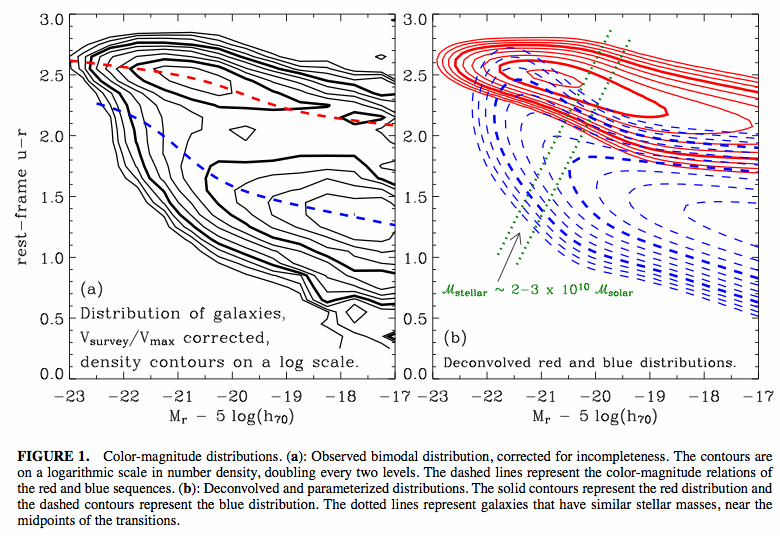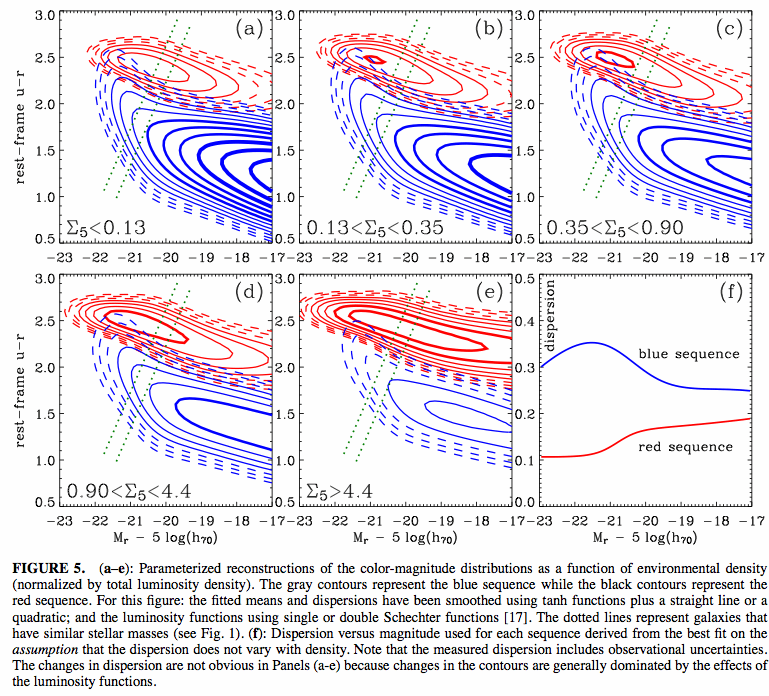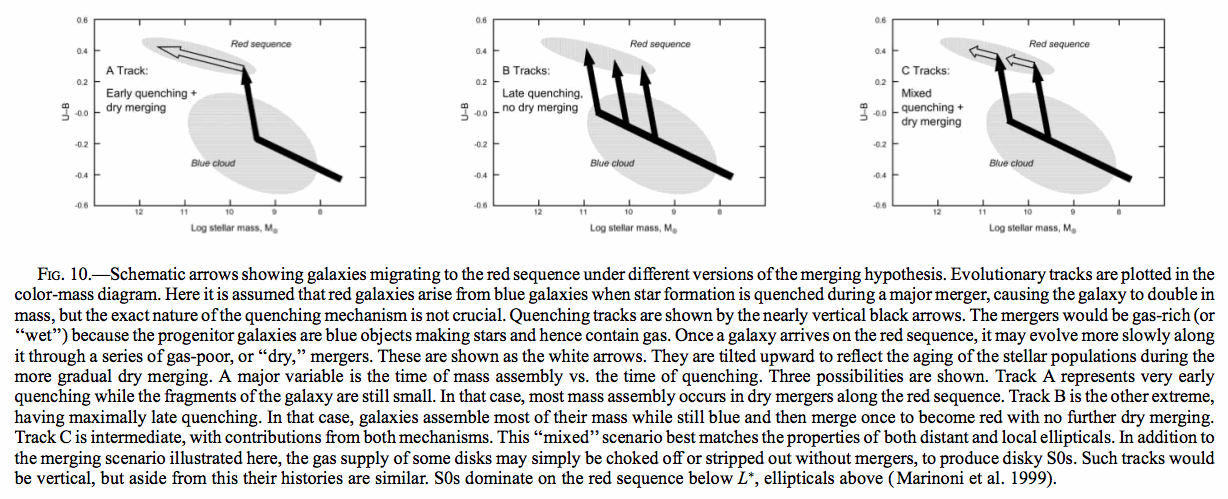
Color-luminosity plane showing the blue and red sequences. The right side shows a two-Gaussian model for the color distribution at each absolute magnitude, so it is a way of separating the two underlying distributions.

The color-luminosity plane now divided by local density parameter ( 5). There is a gradual shift from the blue sequence to the red sequence as we move from low density environments (a) to high density environments (e). Baldry et al 2004 [o-link]
5). There is a gradual shift from the blue sequence to the red sequence as we move from low density environments (a) to high density environments (e). Baldry et al 2004 [o-link]

Alternative depiction of the same phenomenon. Left figure shows the increase in fraction on the red sequence both for more luminous galaxies and galaxies in more dense environments.

Possible origin for the transformation of blue sequence to red sequence galaxies. Mergers combine blue sequence galaxies that become red sequence galaxies. There are several nuances. "Dry" mergers (gas poor) can carry a red sequence galaxy further up the red sequence. The transition could also occur if a blue disk galaxy looses its gas via stripping. Taken from Faber et al 2007 [o-link]